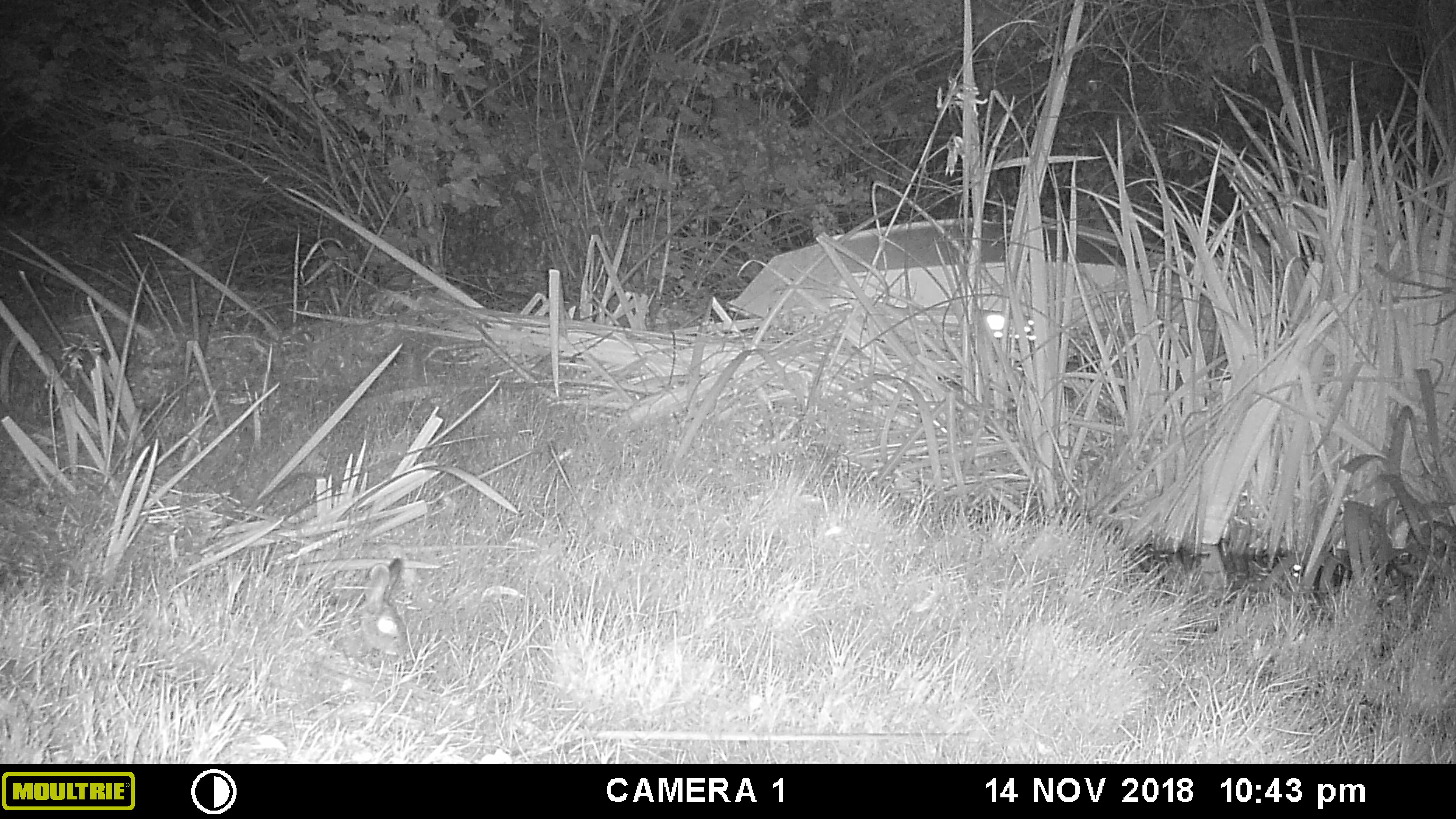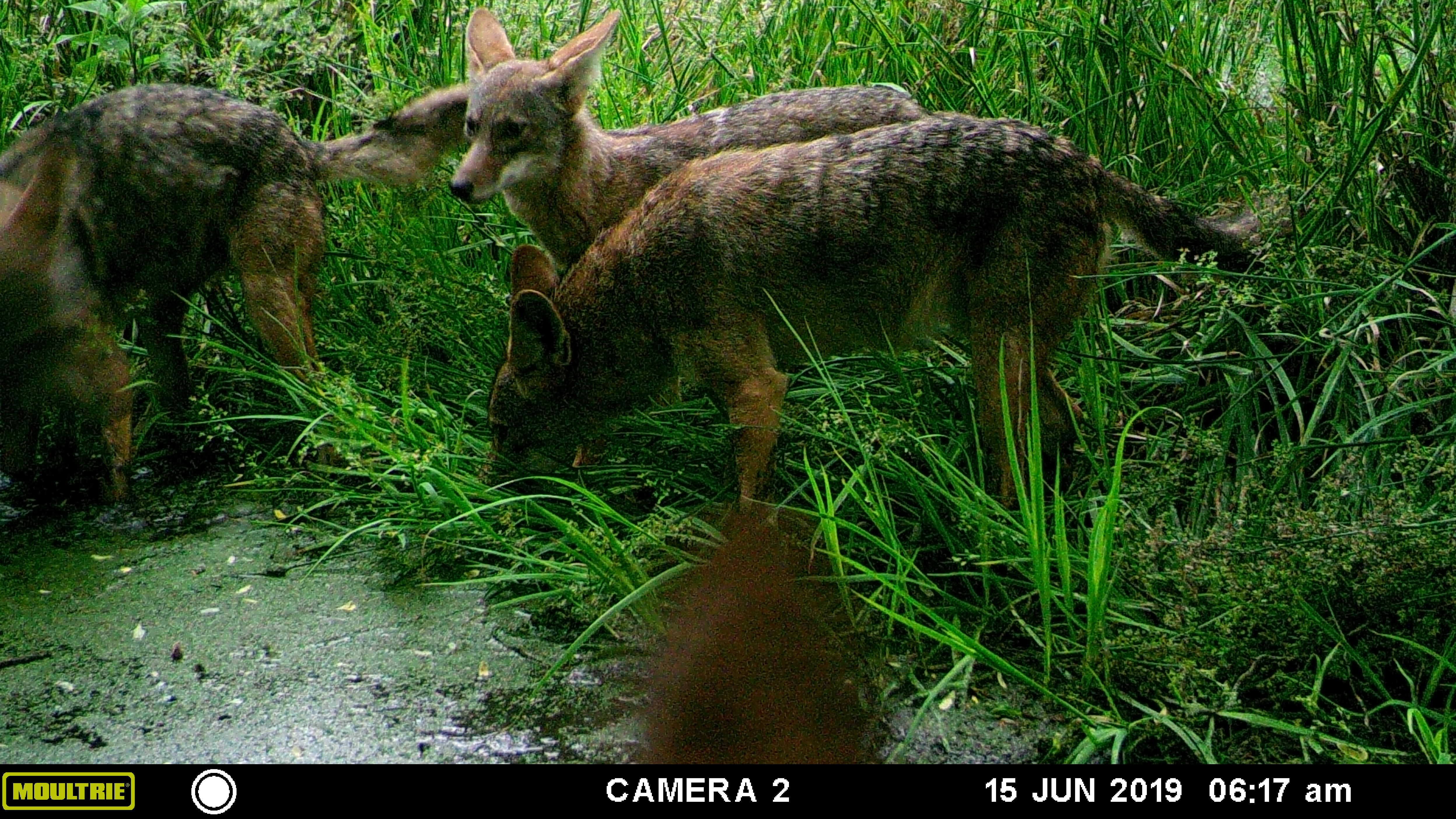-
August at Finch Frolic

Black Beauty zucchini. This year Finch Frolic has been particularly beautiful. Of course, this year we had to close down throughout the spring. Fortunately we’ve been able to reopen for limited-capacity tours with safeties in place. However, I really miss sharing how lovely the garden is, and I want to let you have a little tour right in your home.

Little Marvel Popcorn. It tastes so good! These photos were taken this morning before the temperature rose; its in the 90’sF here today, in North San Diego County. I apologize for the phone camera, as my good camera is in for repair. I only wish that you could also smell the moist mulch from the light overnight dew, or hear the clug-clug of the crow, the tittering of a flock of bushtits and the scuttling of lizards through leaves, which I experienced as I walked around the garden. All of these friends and so many hundreds more are working the garden today and every day, keeping it in balance.

A blue dasher dragonfly, one of many species that patrol for insects all over our property. Their larvae in our ponds look like little dragons, and they eat mosquito larvae as well. Watercress behind. Our food forest is a low-water-use garden, on poor soil, using no additives to the ground other than occasional compost. There are no herbicides, pesticides or other factory-made chemicals used here, and there are two of us who care for the garden. Most of the seasonal beauty this year is due to the diligence of my daughter Miranda who took seed sprouting to a whole new level even before the pandemic arrived. We rely heavily on the insects, birds, lizards, frogs, soil and water microbes and creatures to do all the work protecting the plants, and the plants themselves to create good soil. All we add is a low dose of salty well water which the humus cleans, and leaves or sheet mulch on top. Our fruit trees receive a dose of blender compost once in awhile. Miranda and I hope that these photos bring you peace and lift your spirits, and that knowing you are looking at a safe habitat that is thriving with life gives you a feeling of security as well. It can be done. Permaculture must be done. Best of health! Diane

From the driveway looking down the main pathway into the garden. 
Lorenziana Gaillardia, to feed the pollinators. 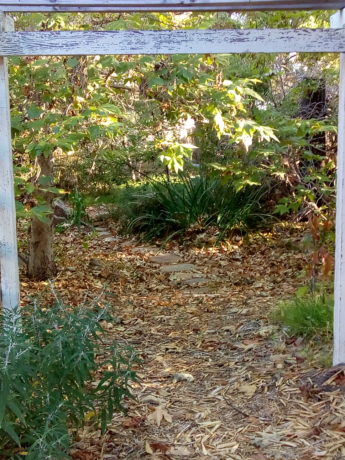
Rock steps cross the large rain catchment basin. Sycamore leaves protect the soil from the heat. 
Our new orchard, with beans trained up a teepee over a fruit tree, and tomato cages behind. 
Our old Ca. Live Oak. Oaks are home to over 300 species of bird and insect. 
Our jasmine-covered gate in the sun. 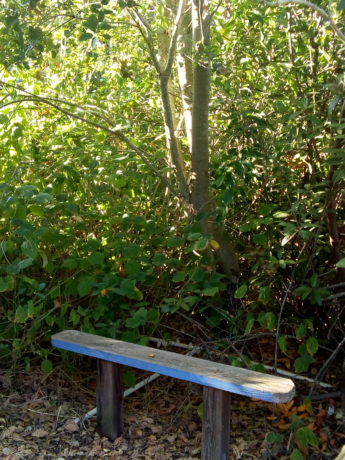
Resting place, made from recycled wood. 
Figs! Panache Striped Tiger. 
Dawn through the birch trees, with Naked Lady amaryllis blooming behind the blackberries. 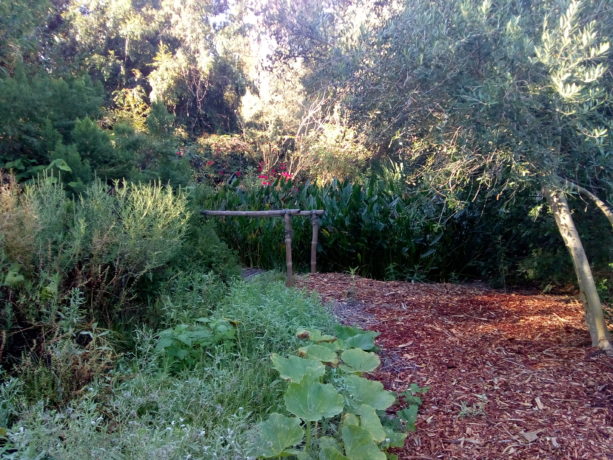
Our small bamboo bridge next to our little pond. 
Dawn through an olive tree. 
A native mallow wildly blooming over a bamboo footbridge Miranda just built. 
Black Krim. 
A plant guild combines plants with different functions for the benefit of all. 
The Torch Tithonia is over 5′ tall, and butterflies and birds love it. A plum, squash and orange tree in the foreground. 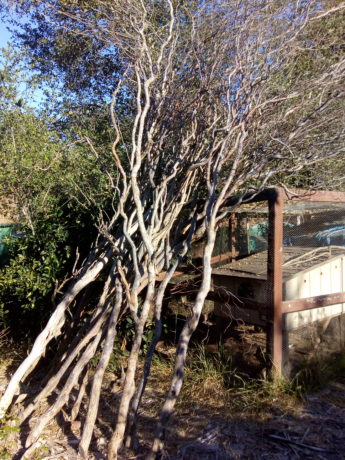
We pollarded our willow trellis in January, and these tall interesting limbs are waiting for some creative project to arise. 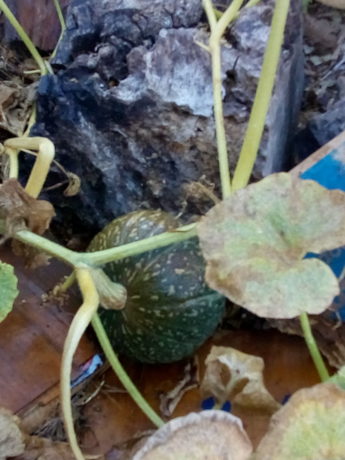
Kabocha squash. 
An army worm taking a sleep in a mallow flower. 
We grow the timber bamboo, and eat it, too! 
This beauty is a carrot, Lunar White, allowed to go to seed. Gorgeous and great food for our tiny native insects. 
Lorenziana Gaillardia. 
Straw flower and carrot. 
Apples do very well in hot weather. Cripps Two. 
Red Kuri squash vine past the seating. 
A whole mess of Naked Ladies! 
Tall Double Mix strawflowers, (Helichrysum bracteatum). 
The Withy Hide, or willow hut. 
Hard to believe that these massive trees grew so quickly. It has everything to do with water capture in the soil. 
This stump has personality! Brachychiton rupestris, Australian Bottle Tree. 
The leaf cover makes this rain catchment basin look full. 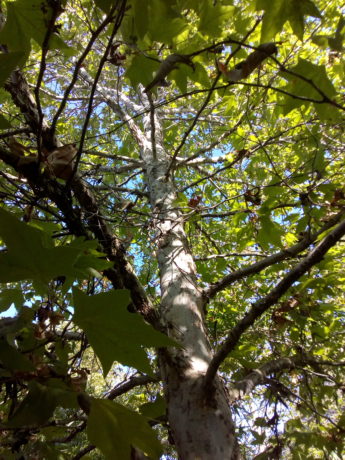
California sycamore, 8 years old. 
A covered bridge over the rain catchment system. 
- Animals, Bees, Integrated Pest Management, Natives, Other Insects, Permaculture and Edible Forest Gardening Adventures, Predators, Quail, Reptiles and Amphibians
Native Insects and IPM

A tiny wasp. Honeybees are not native to North America; however, we have an amazing number of underappreciated, ignored or sprayed native insects. Here in Southern California where the lack of rainfall has created a landscape called the Elfin Forest, the canopy is short, the animals are small and many of the insects are very tiny. If you take a careful look at clusters of small blossoms you will see tremendous air traffic. Besides the honeybees, there are butterflies, moths, and bees, wasps and flies that range in size from the large black carpenter bees and shiny green June bugs, to predatory wasps no larger than a speck of dirt on the back of your hand. These are your companions. They are the unsung workers responsible for a large percentage of pollination and invasive insect control. They in turn are food for the other policing creatures of your garden, the small birds, lizards, frogs and toads. And newts, salamanders, dragonflies and damselflies… I don’t want to leave any of these marvelous workers out.
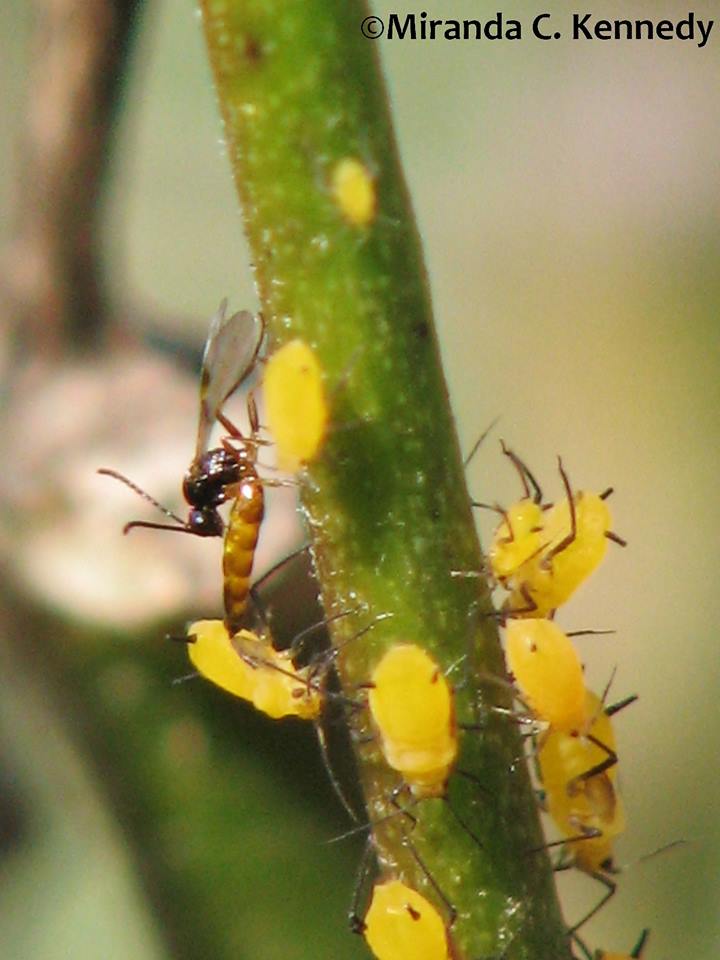
A native predatory wasp laying eggs in oleander aphids on milkweed. These tiny insects need small clusters of flowers to feed upon, and planting to cater to the native insect population wherever you live is vitally important. It is just as important as building good microbial communities in the soil.
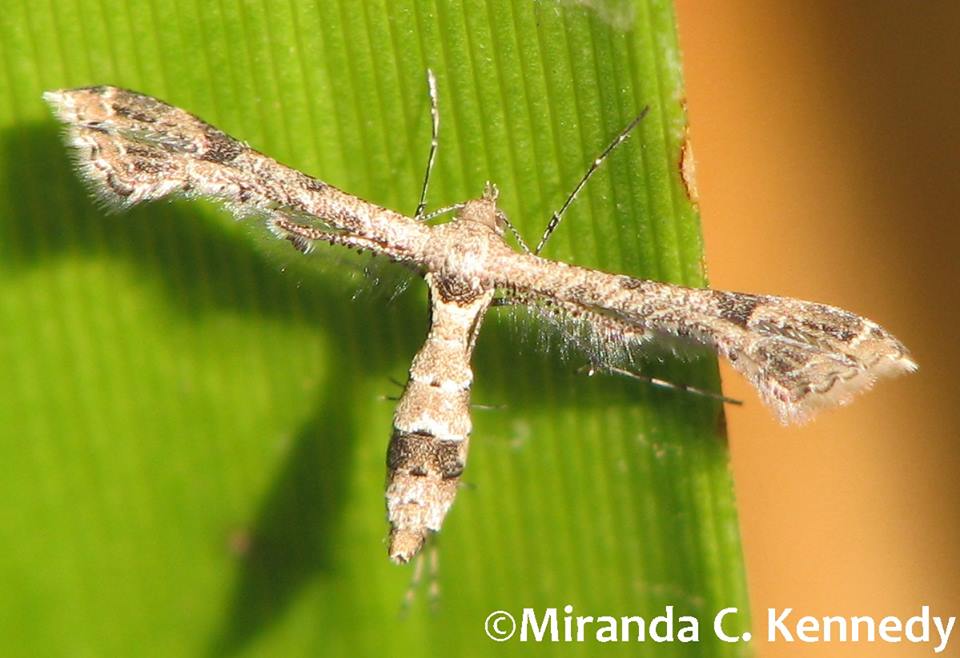
A plume moth. Here is a video – a shaky one taken with my phone as my camera is in for repair – of the tremendous activity around our blooming apple mint. The mint is next to our vegetable garden, and pollination is never a problem. Throughout our property we have blooming plants, mostly natives especially of course in our permaculture Zone 5, and they are feeding thousands of native insects – and honeybees – as well.
Please be patient with the video (it picks up my pulse!) and enjoy our August garden.

